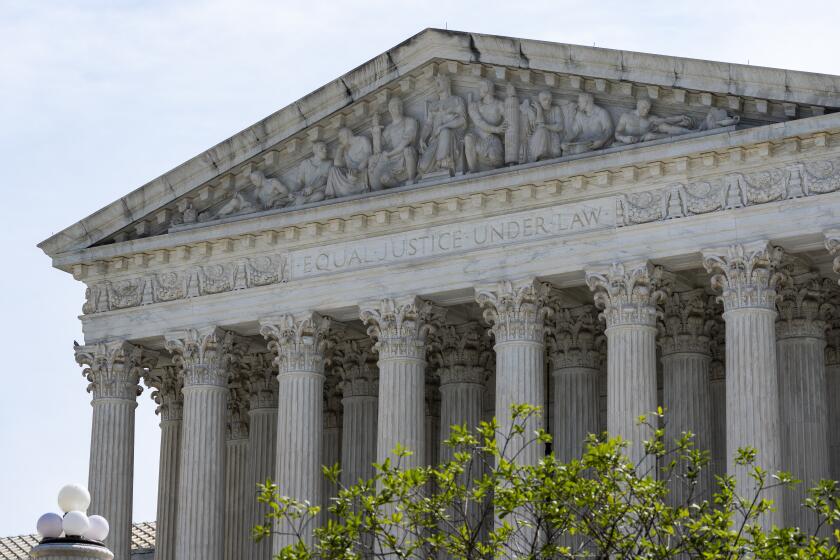Bad air days – 464 years of them
- Share via
1542: Explorer Juan Rodriguez Cabrillo christens San Pedro Bay “La Bahia de la Fumos” — Bay of Smokes — for the way smoke from Indians’ fires hug the ground.
1868: The L.A. area’s 5,000 residents are perplexed by “an atmosphere ... so filled with smoke as to confine the vision within a small circumference.”
1901: An episode of dirty air is mistaken for an eclipse of the sun.
1905: First recorded use of the word “smog,” by physician Harold A. des Voeux, to describe London’s bad air.
July 26, 1943: After a series of bad-air episodes, visibility in downtown L.A. is reduced to less than three blocks.
1950s: Smudge pots (fires used to keep fruit trees warm at night) are banned.
1955: Highest ozone level — 0.68 parts per million in downtown Los Angeles — reported in the Southland.
1956: The first air-quality monitoring stations are established; today the Air Quality Management District has 35.
1958: Backyard incinerators are banned.
1966: California is the first in the nation to set auto emission standards.
1974 Creation of Stage 1 (bad), 2 (worse) and 3 (gasp!) smog alert system.
1975: South Coast Air Basin has 118 Stage 1 smog alerts. Catalytic converters are required on new cars sold in California.
1977: The South Coast Air Quality Management District, or SCAQMD, is formed; it now regulates air quality in 10,743 square miles populated by more than 16 million. 1995: The South Coast air basin has 14 Stage 1 smog alerts.
1999, early 2000s: Ozone levels in Houston are worse than L.A’s for several years running. L.A. recovers, and holds, its lead.
2006: The South Coast air basin has had no Stage 1 smog alerts since 2003, no Stage 2’s since 1988, no Stage 3’s since 1974.
Sources: SCAQMD, California Air Resources Board, “Don’t Breathe the Air” by Scott Dewey, Times research
More to Read
Sign up for Essential California
The most important California stories and recommendations in your inbox every morning.
You may occasionally receive promotional content from the Los Angeles Times.













